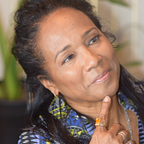The WNBA — Flying High at 25
Let The 2021 Season Begin
WNBA season 25 tips off Friday. Four match-ups are on the schedule, including the LA Sparks’ face-off against the Dallas Wings at Staples Center.
With the recent talk about disparities in pay rates and audience engagement and Title IX yada yada compared to the NBA…. I’ve started watching women’s ball a lot more. The NCAA came under scrutiny during March Madness when women’s players pointed out drastic differences between their gym and the mens. A running dialogue on social media crops up regularly to answer for these disparities; the topic is discussed ad naseum in chats and twitter feeds, and not always kindly.
Title IX established that federally funded institutions, including colleges, are legally required to provide girls and boys with equitable sports opportunities. Before Title IX, one in 27 girls played sports. That was 1972. Today that number is two in five.
In pro leagues the stakes are understandably higher and it’s common knowledge that the WNBA operates at a deficit. When the chance presented itself, I couldn’t resist getting the thoughts of Lakers assistant coach Phil Handy on one subject that keeps cropping up in chats.
He’s an advocate for the women’s game, having trained Koby Bryant’s daughter Gigi. He works out with Seattle Sparks guard Jewell Loyd, among other elite females.
So I asked Handy, Is it really all about the dunk?
“The biggest difference between women’s and men’s basketball is the athletic ability of men,” said Handy. “You know, how fast and how high men jump.” And from an eyeball standpoint that difference can be dramatic.
Lisa Leslie was the first WNBA player to dunk. This happened in 2002. Her height and hang time compared to NBA ball handlers is markedly shorter, vertically and diagonally.
But a quick analysis suggests reason for optimism. Men didn’t start dunking in earnest until the 70s, almost 30 years into the professional game.
The WNBA was in its infancy when Leslie took a somewhat polite swipe at the rim. She dunked in the first nine years of a league that didn’t have big fans or big money or the big marketing campaign of their counterparts.
Handy sees the writing on the rim as well. “That part of the game is changing, and what you’re going to see, eventually, you’re gonna see a lot more women trying to dunk in games.” He said there’s constant dialogue on Twitter and Instagram, where women are talking about really trying to break that barrier.” That’s a great insight, from a guy who’s trained some of the best.
Women ballers have more than dunking to prove. Elite high school players I’ve talked to think men should stop underestimating women, period. Their chatter is all about getting the marketing and promotion that will put more fans in seats and get them the pay equity they deserve.
Handy says they work just as hard as the men.
But elevating their sport will likely come with that other elevation. It will be a satisfying trend to follow.
